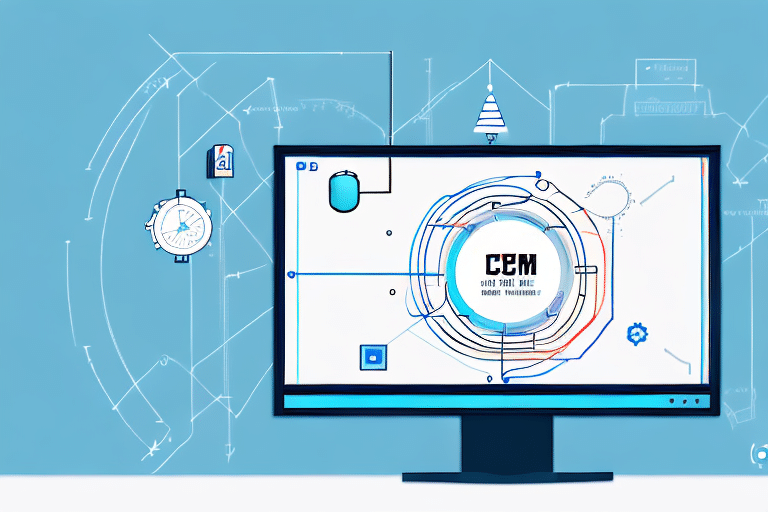What is Condition-Based Maintenance (CBM)?
Condition-Based Maintenance (CBM) is a proactive maintenance strategy that monitors the real-time condition of equipment to determine the precise timing for maintenance activities. Unlike traditional time-based maintenance, which schedules maintenance at regular intervals regardless of equipment condition, CBM ensures that maintenance is performed only when necessary. This approach reduces unnecessary maintenance tasks, minimizes downtime, and lowers overall maintenance costs.
Understanding How CBM Works
Data Collection and Monitoring
CBM relies on advanced sensors and monitoring tools to continuously collect data on various parameters such as vibration, temperature, and pressure. This data provides insights into the operational health of the equipment.
Data Analysis and Predictive Insights
Collected data is analyzed using sophisticated algorithms and machine learning techniques to identify patterns and predict potential failures. Predictive analytics enable maintenance teams to address issues before they escalate into major problems.
Maintenance Decision-Making
Based on the analysis, maintenance tasks are scheduled precisely when needed. This targeted approach ensures optimal use of resources and enhances equipment reliability.
Benefits of Implementing CBM
Cost Reduction
By performing maintenance only when necessary, businesses can significantly reduce maintenance costs. According to a study published in the Journal of Quality in Maintenance Engineering, companies implementing CBM have reported up to a 30% reduction in maintenance expenses.
Increased Equipment Uptime
CBM minimizes unexpected breakdowns, thereby increasing the overall uptime of equipment. Enhanced reliability leads to smoother operations and improved productivity.
Extended Equipment Lifespan
Regular monitoring and timely maintenance help in extending the lifespan of machinery. This results in better return on investment and delays the need for costly replacements.
Key CBM Techniques
Vibration Analysis
Vibration analysis involves using sensors to detect abnormal vibrations that may indicate wear or damage in equipment components.
Thermography
Thermography uses infrared cameras to identify overheating or unusual temperature patterns, helping to prevent thermal-related failures.
Oil Analysis
Oil analysis examines the quality of lubricants to detect contaminants and assess the condition of machinery parts.
Ultrasonic Testing
Ultrasonic testing employs high-frequency sound waves to identify defects or thinning in material structures, commonly used in the aerospace and automotive industries.
Challenges in CBM Implementation and Solutions
Data Management
Managing the vast amounts of data generated by CBM systems can be daunting. Implementing robust data management software and leveraging cloud-based solutions can streamline data handling and analysis.
Skilled Personnel
CBM requires specialized skills for operating monitoring equipment and interpreting data. Investing in employee training programs or partnering with external experts can address this challenge.
Initial Costs
The upfront investment for sensors, software, and training can be significant, especially for small and medium-sized enterprises. Exploring leasing options or outsourcing CBM services can mitigate the financial burden.
Latest Trends and Innovations in CBM
Artificial Intelligence and Machine Learning
AI and machine learning are enhancing the predictive capabilities of CBM by enabling more accurate failure predictions and automated anomaly detection. According to a report by McKinsey & Company, AI-driven CBM can improve maintenance efficiency by up to 25%.
Integration with the Internet of Things (IoT)
The integration of IoT devices allows for seamless data collection and real-time monitoring, facilitating quicker response times and more efficient maintenance processes.
Edge Computing
Edge computing processes data closer to the source, reducing latency and enabling faster decision-making in CBM systems.
Measuring the ROI of CBM Programs
Maintenance Cost Savings
Track the reduction in maintenance expenses by comparing costs before and after CBM implementation. Significant savings indicate a positive ROI.
Equipment Uptime
Measure the increase in equipment uptime as a direct benefit of CBM, leading to enhanced productivity and revenue generation.
Production Efficiency
Assess improvements in production efficiency and output quality, which are often direct outcomes of better-maintained equipment.
Best Practices for Successful CBM Implementation
Regular Calibration of Sensors
Ensure that all monitoring sensors are regularly calibrated to maintain data accuracy and reliability.
Comprehensive Training Programs
Provide thorough training for maintenance personnel on using CBM tools and interpreting data effectively.
Develop a Detailed Maintenance Plan
Create a maintenance plan that incorporates data insights from CBM systems to schedule timely and effective maintenance activities.
Establish Baselines and Monitor Deviations
Set baseline performance metrics for equipment and continuously monitor for deviations that may indicate potential issues.
The Future of CBM: Predictions and Expectations
Enhanced Predictive Analytics
Advancements in predictive analytics will further improve the accuracy of failure predictions, enabling even more proactive maintenance strategies.
Greater Adoption Across Industries
As CBM technologies become more affordable and accessible, widespread adoption across various industries, including healthcare and transportation, is expected.
Integration with Other Maintenance Strategies
CBM is likely to be integrated with other maintenance approaches, such as Reliability-Centered Maintenance (RCM), to create comprehensive maintenance programs.
Sustainability and Energy Efficiency
CBM will play a crucial role in enhancing sustainability by optimizing energy usage and reducing waste through efficient equipment operation.
Conclusion
Condition-Based Maintenance is revolutionizing the way industries approach equipment maintenance. By leveraging real-time data and predictive analytics, CBM offers significant benefits in terms of cost savings, increased uptime, and extended equipment lifespan. Despite implementation challenges, adopting best practices and staying abreast of technological advancements can ensure the successful integration of CBM into business operations. As CBM continues to evolve, it will remain a pivotal strategy for enhancing operational efficiency and achieving long-term business success.






















